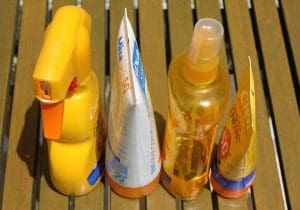As we’ve discussed previously, since the inception of the Environmental Protection Agency – or EPA – in the 1970s, industries have become more heavily regulated and chemicals have become more pervasive in the modern world.
In fact, the American Chemistry Council estimates that 95% of the goods produced by the U.S. are the result of some form of chemistry, from colorants and flavor enhancers in our food to the surfactants used in laundry detergent and soaps, to the butadiene rubber tires you drove to work on.
Product stewardship, or ‘… the act of minimizing the health, safety, environmental, and social impacts of a product and its packaging throughout all lifecycle stages, while also maximizing economic benefits,’ seeks to ensure that products containing chemical ingredients are developed, manufactured, transported, used and disposed of in a way that is safe.
Further, the environmental impact of products and their packaging are associated with energy and materials consumption, waste generation, toxic substances, greenhouse gases, and other air and water emissions. So, with a product stewardship approach, manufacturers are considered to have the greatest ability – and therefore the greatest responsibility – to reduce these impacts by attempting to incorporate the full lifecycle costs into the cost of doing business.
The Case for Sunscreen
 Consider, then, the case for sunscreen. Seemingly benevolent – beneficial, even – the active ingredients in many commonly-used sunscreens were found to enter the bloodstream at much higher levels than permissible by the current U.S. guidelines from health regulators, and therefore warrant further safety studies, according to an FDA study published earlier this year.
Consider, then, the case for sunscreen. Seemingly benevolent – beneficial, even – the active ingredients in many commonly-used sunscreens were found to enter the bloodstream at much higher levels than permissible by the current U.S. guidelines from health regulators, and therefore warrant further safety studies, according to an FDA study published earlier this year.
The study found maximum plasma levels of the chemicals it tested for to be well above 0.5 nanograms per milliliter (ng/mL) – the level at which FDA guidelines require further safety testing – registering at 4 ng/mL, or nearly eight times the FDA threshold.
According to expert opinions in the Journal of the American Medical Association, which accompanied the study, the findings raise many important questions about not only the product itself, but also the process by which the industry, clinicians, specialty organizations, and regulatory agencies evaluate the benefits and risks of products like sunscreen.
Even though sunscreen manufacturers have resisted common-sense safety testing for their ingredients, the FDA is now proposing that their ingredients must undergo additional safety testing in order to stay on the market.
Why Does It Matter?
As the FDA explains, while the regulation of sunscreens began in the 1970s, the agency’s understanding of chemical absorption through the skin – and the subsequent ability to measure absorption – has advanced.
Additionally, there have been a number of technological advances in the formulation of sunscreens, allowing the creation of sunscreen products with higher SPFs and increased broad-spectrum protection against UVA and UVB. These advancements have improved efficacy through the use of more active ingredients combined in higher concentrations, but such changes may also lead to greater absorption – and possibly greater risks.
The FDA relies on manufacturers to provide the data necessary to establish safety and effectiveness for use of the active ingredients in sunscreens. Product stewardship then takes it an actionable step further to reduce the health, safety, and environmental impacts it has across its lifecycle while simultaneously focusing on sustainable end-of-life management.
SDSs & Stewardship: Taking A Top-Down Approach
Generally, industries approach the creation of SDSs from the bottom, going from ingredients up, instead of from the hazards down.
But why does this matter? Because ingredients that are hazardous may lose their hazardous properties when they’re mixed together. For example, consider corrosivity. Both acids and bases are corrosive. But when mixed together, they may not be. So what really matters is the end product.
A top-down – or hazard-down – approach then will not only lead to consistency across documents but also improved safety because end-users become familiar with the layout and where the information is.
So whether a manufacturer is trying to develop safer products, more sustainable packaging, trying to avoid the costs associated with not knowing how the ingredients in your products are regulated globally, or SDS authoring that groups products in families based on unique hazard combinations and physical states, a focus on product stewardship is not only good for safety and compliance, but for your company’s bottom line as well.
Contact us today for compliance partner equipped to handle your SDS authoring needs, saving you time and money so you can focus on what is important to your business!


